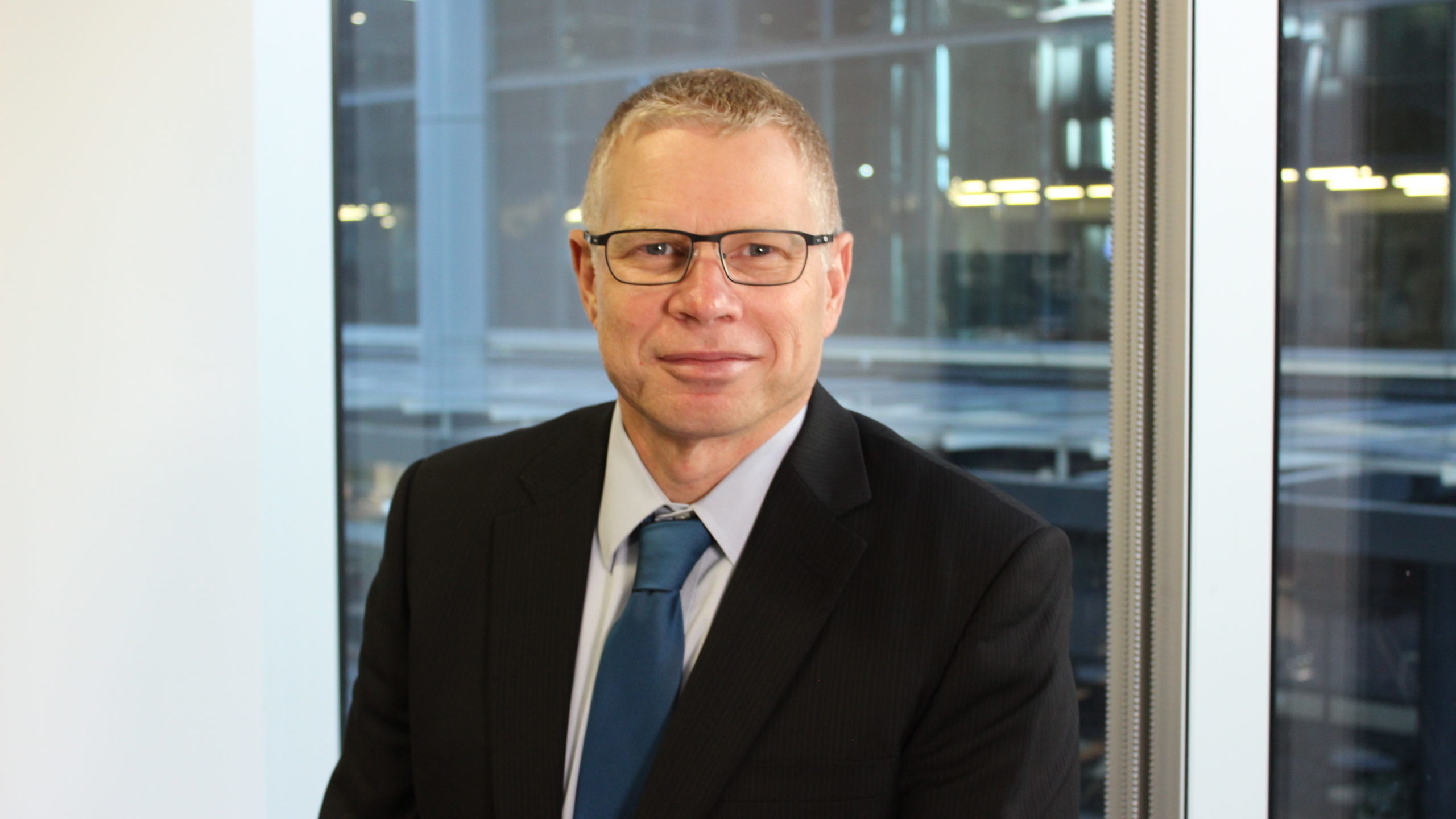Q & A: New Core Lithium boss Gareth Manderson on moving into battery metals and the future for the NT lithium miner

Pic: Supplied
At its nadir in March 2020 Core Lithium (ASX:CXO) was trading for just 2c.
That came amid an historic crash in lithium prices which brought an industry which had just a couple years previously emerged as the key to the global transition to electric vehicles to its virtual knees.
It did not take long for that situation to unwind.
Spot prices for spodumene concentrate have surged from ~US$400/t, a price at which virtually all hard rock miners were making a loss, to US$6500/t, making the sector one of the most profitable in the mining industry.
Core, which stuck to its guns and is on track to open the Finniss lithium mine in the Northern Territory before the end of this year, is now trading for $1.40, a rise of almost 7000%.
For former Rio Tinto (ASX:RIO) executive Gareth Manderson, $2.4 billion capped Core is the perfect entry point to the world of battery metals.
Appointed this month as Core’s new CEO, Manderson will steer the company towards its expected first production of spodumene concentrate by the end of this year.
The mine will be the only new lithium operation to open in Australia this year, not counting the restart of mines like Mineral Resources (ASX:MIN) and Albemarle’s Wodgina, and the first in the country outside of Western Australia.
A scoping study last year outlined a mine with a 10-year life at 175,000tpa, with 80% of its initial output to be sold via offtake deals to Chinese majors Ganfeng and Yahua.
It also announced a term sheet with Tesla in March, which is subject to the execution of a definitive agreement.
But Core has already demonstrated its potential to extend the resource and mine life at Finniss, bumping it up to 12 years after an upgrade last month.
With a new 40,000m RC program starting this week that could go even further.
We caught up with Manderson to talk about his first days in the role and why lithium is such a compelling opportunity right now.
You’ve taken on this new role with Core Lithium, what inspired the move out of iron ore and into lithium?
“The battery minerals, critical mineral space has been of interest for a little while for me, and it’s probably something that Rio Tinto is beginning to get into.
“In many ways that whole carbon reduction story and getting into a smaller miner growing a business is quite exciting.
“I think the Core Lithium team have done a particularly good job, I’d been looking a few different opportunities in that space and I’d have to say that the board, when you kind of look at their story over the last 12 months, is pretty solid and I like what I heard from the board.”
What’s it like for you coming into Core Lithium at the time when you’re building what will be the only new lithium mine to come on stream this year?
“One of the things I like about Core is they’ve started with a minimum viable project. They’ve looked at what resource base do we need to support a project and they’ve got moving on that.
“And I think that generates revenue sooner rather than later and then in parallel with that, they’ve been improving the resource and reserve.
“So from that perspective, the mine life has increased from about seven years to 12 years in the last 12 months. So it’s proving up the resource and the reserve at the same time as delivering a project, not moving on that project until you’ve got the minimum viable orebody but also design and construction of the plant.
“I like that approach. I think that’s actually great for investors and great for the sustainability of the business.
“So that is exciting, there’s two pieces to that. One is creating the business in the early days rather than doing a lot of exploration, we can build a business a little bit earlier.
“And I think that earlier revenue generation is quite key as well.”
How important is speed to market, given the situation with lithium prices at the moment where we’ve seen it go from levels where people were losing money to levels where we’re seeing better margins than just about any other commodity in such a short space of time?
“Core is one of the early stage, not just developers, but actually deliverers of material into the market. So that’s quite key, it’s timed incredibly well.
“We can start and then figure out what our growth story looks like from there, (we’ll be) generating revenue and can start building on that over time, the opportunity to start leveraging some of those options that are available to us.
“If we were (just) proving up the resource, we wouldn’t have a revenue line to drive some of those development projects.”
What do you think that demand profile for lithium looks like? You’ve got a couple of offtake deals, are people calling you up saying ‘hey do you have more?’
“We have offtakes with Ganfeng and Yahua and I’m just in the process of getting briefed on all of that.
“We’ve probably seen a bit of a shift I understand in the last year or so where we’re not just seeing converters’ interest in material supply, or concentrate supply, we’re seeing interest in the car makers as well.
“And we do have a number that are reaching out and contacting us in addition to Tesla, for sure.
“So there’s definitely growth there, the advice I’m getting is that it’s hard to see lithium not continuing at least at current demand levels for a period and that’s really linked to that battery story and the move to electric vehicles.
“So you’ve seen announcements by Ford, GM, major car makers – I would just refer you to those – that’s really underpinning that demand story.
“What’s our view? Our view is that we have a place to play in the market. And there’s definitely an opportunity for those concentrate units that we will be producing.
“And at the moment, unlike a couple of years ago, we’re actually seeing lots more opportunity for that demand.”
Everybody’s talking about how difficult it is to get staff. How are you finding that process as a company that’s building a mine. Is it different in the NT to maybe what it was in WA when you were with Rio Tinto?
“Unemployment is pretty low in Australia at the moment, so we’re all competing in a pretty tight labour market. There are some pressures that we’re seeing on the project there as well.
“We probably don’t have all the resources that we’re looking for, we’re definitely doing some recruitment at the moment. But we have been able to get a reasonable level of close to what we’re looking for.
“The majority of our people are going to be resident in Darwin, and in some ways our location and proximity to Darwin’s quite helpful there, so people get to be at home at night, rather than flying backwards and forwards on a FIFO type arrangement.
“So what we’re trying to do is use as many levers as we can that are in our favor in that space to make sure we can attract and retain people.”
Do you see it getting harder to build these sorts of projects going forward?
“I think with the current supply chain issues, the current labour issues that (Australia has), it’s not going to be easy, that’s for sure.
“What we need to do is to pull the levers we can that are attractive around our particular project, make that clear to people and provide a compelling case of why it’s great to come and work on projects and mining operations with Core Lithium.
“I don’t see any of that unwinding in the near term. We need to just be an attractive proponent and attractive company to come and work for whether it’s in a contract arrangement or direct arrangement working for the team.”
Other lithium bosses say they see lithium as a space people want to work so they’re able to attract staff. Are you seeing that at Core Lithium with your recruitment at all that people want to work in the battery metals space?
“That’s one of the reasons I joined the company, if you like, was to get into that particular space. Have I heard or getting a sense of that? It’s probably early days for me just yet.
“But I do know from other roles, that the move to the carbon neutral economy is definitely something that the community is wanting to see and that does flow on to one of those levers for attraction as well.
“We need to surface that, I think that’s an opportunity for us.
“I know that does drive some people’s decision making. Have I seen a strong theme in my week and a half? Probably not so much, but I do know that a couple of people in the office here, for example, have mentioned that.”
Related Topics

UNLOCK INSIGHTS
Discover the untold stories of emerging ASX stocks.
Daily news and expert analysis, it's free to subscribe.
By proceeding, you confirm you understand that we handle personal information in accordance with our Privacy Policy.








